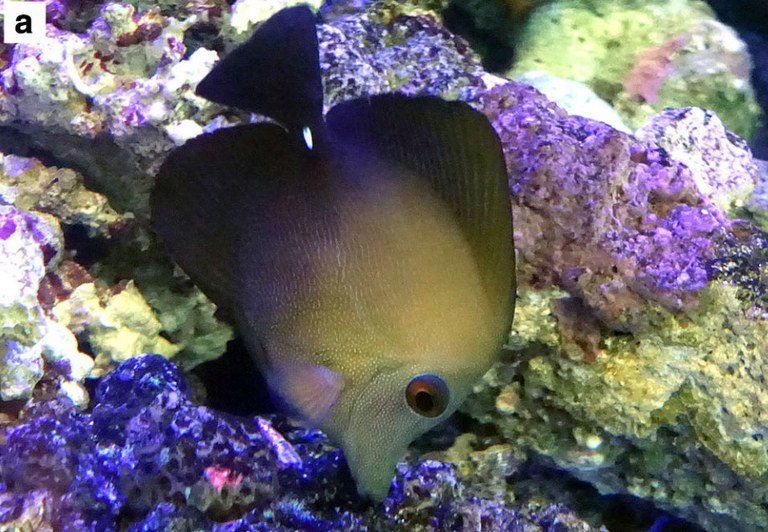Forward-swept scalpels are conspicuously seen on the larger tangs in the genus Naso, whose spines are not retractable. Until now, It hasn’t been observed on smaller tangs from the genera Zebrasoma or Acanthurus, whose spines are much smaller and retractable.

The pronounced, forward-swept spines of Naso lituratus.
Upon closer examination under electron microscopy, it turns that a few Zebrasoma scopas also have developed forward-pointing spikes on their retractable spines. The researchers of a paper published in Coral Reefs found “most Z. scopas had smooth, sharp, retractable spines that came to a distinct point (Fig. b). However, some specimens had spines with distinct forward-pointing spikes (Fig. c).” In other words, most scopas tangs exhibited the straight edge scalpels we expect, but a few specimens had unexpected serrated scalpels.

The discovery shows that there are intraspecific variability of morphological features that we haven’t yet observed with the naked eye. Seeing such features on Zebrasomas also reinforces the common lineage of Acanthurids and help us understand how Nasos may have evolved their pronounced forward-swept serrations.
Who knows? In a 100,000 years, Zebrasoma scopas may all have serrated scalpels, too. We’ll keep you updated. 










0 Comments